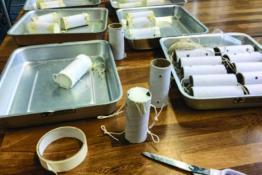Exploring the public's sensory genotypes and phenotypes through innovative practice
Issue 367 | Page 87 | Published Dec 2017
Description
The genetic diversity contained in a population can be used to engage the audience in an understanding of human genotypes and phenotypes. With a series of simple examples of welldocumented sensory phenotypes related to the perception of colour, aromas or food preference, the diversity of the audience can be easily explored. The collecting of sensory phenotypes can be done using online polling and the results can be fed back to the audience. This allows the audience to recognise their specific genetic place in the broader population, which personalises learning and aids in the comprehension of the subject.
More from this issue
This article recounts the author's working experience of one method by which pupils' understanding of the epistemologies of science can...
This article aims to introduce the lanthanides (also known as the lanthanoids) to teachers and their students. The lanthanides are not mere'...




